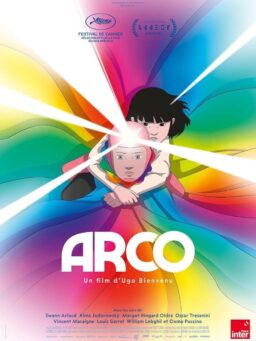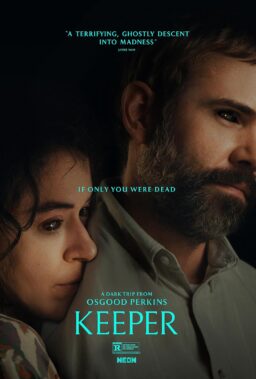In a poem titled “Your Life,” Andrea Gibson reads, “You’re going to look at all your options and choose conviction.” This boundless perseverance is defining to the late poet laureate’s life, whether in terms of their gender, the pursuit of love, choosing life in dark days, or navigating their ovarian cancer diagnosis and treatment, the subject of Ryan White’s years long documentary “Come See Me in the Good Light,” which won Sundance’s Festival Favorite Award earlier this year.
Cancer is a tricky subject. It’s overwrought and, when captured on film, too often overly saccharine. And while “Come See Me in the Good Light” doesn’t escape these qualities, it renders the subject with profound intimacy, focusing on Gibson and their wife, fellow poet Megan Falley, as they confront the uncertain. The film is true to Gibson’s persona, which is marked by everything you expect from a poet: thoughtfulness, tenderness, and thorough self-awareness.
Gibson’s diagnosis came in 2021, and despite a rapid hysterectomy, was followed by recurrences and metastasis that we watch them battle over the course of the film. The film’s construction is as intimate as it gets, following Gibson into doctor’s appointments, curling up with them and Falley in bed, and eating meals soundtracked by the laughter of close friends. White’s style is not fly-on-the-wall observant, but seat-at-the-table active. Structured also through Gibson’s reading of their poems, spliced in when narratively relevant, we come to see just how much they are synonymous with their work. There is no separation of the art and artist, as Gibson’s life is unabashedly unfiltered in their prose.
There’s a level of contrived preparedness we expect from poetry–a process defined by the fanciful, revised to perfection before ever meeting our eyes–but Andrea Gibson was a poet from skin to bone, eking gorgeous lines within their daily chatter. And this naturalism was a cornerstone of their work, as a running joke throughout the film is their “limited” vocabulary and maxim of “why write poetry that’s over someone’s head?”
“Come See Me in the Good Light” takes inspiration from Gibson’s poetry, attempting to be just as lyrical. In doing so, it sometimes falls into a gentle pattern of cliches and obvious metaphors. Gibson explicitly states that they identify with such thematic indulgences, and perhaps these occurrences are natural to their person. But filmically, there is a desire for relief from the overly crafted. And among the more delicate authenticities is space for humor, which does come around to refresh the film of some of its more recurrent platitudes, as does the damning.
The waxing and waning of emotions arrive with expectation, as humor and hurt are indispensable for coping, but labeling “Come See Me in the Good Light” as a point-blank cancer story negates the film’s sympathy. White uses archival footage of Gibson’s early days, coming of age as a queer person in small-town Maine, playing basketball, and dipping their toes into the slam poetry world to paint a portrait of a person in the process of becoming. Centering also their love story with Falley, inseparable from the narrative as they walk the tightrope together, White shows how love is integral to Gibson’s story. Their relationship is the film’s earthen quality, the component that provides buoyancy to the memoir.
As they check the progression of the cancer every three weeks, make crude jokes about potential cures, or view themselves through an iPhone’s aging filter, there’s a hopeful sentimentality that underlines their journey through the trenches. And “Come See Me in the Good Light” is certainly Gibson’s story, but even more so, a documentary of two poets in love. Not running to or from grief, but living deeply and feeling their way through every ebb and flow, creating a desired path in the face of helplessness.




















